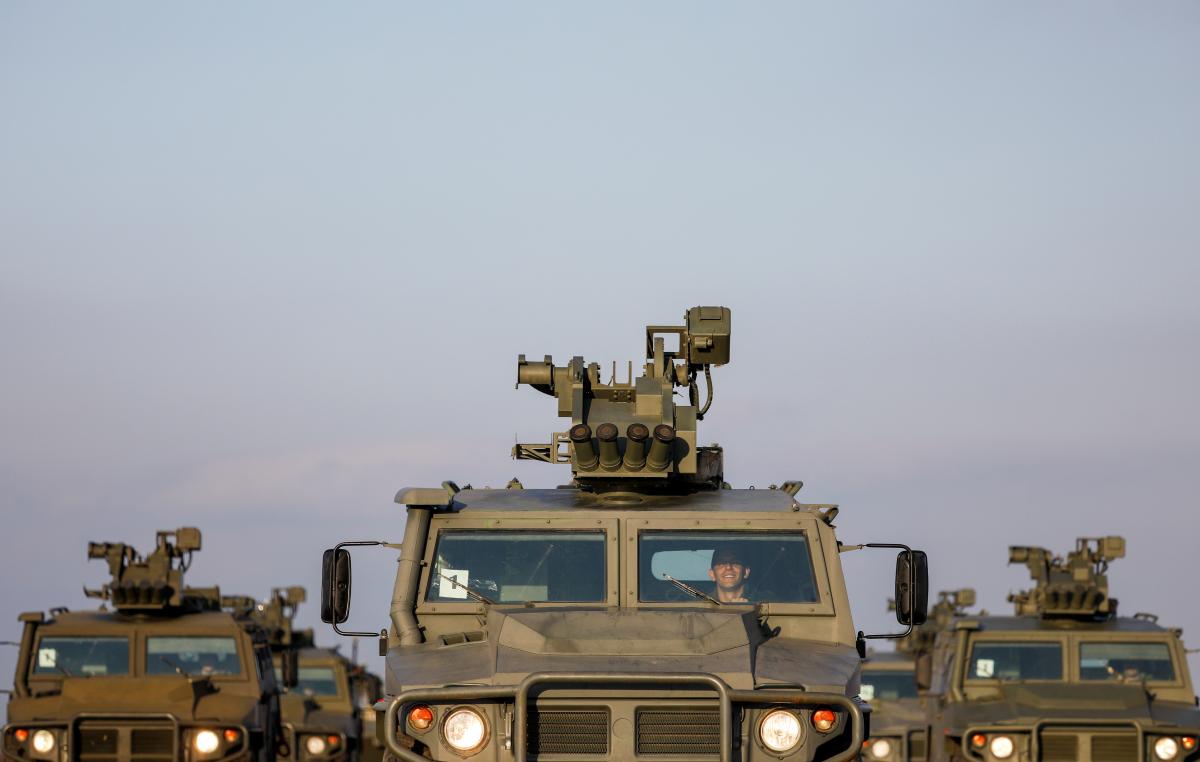
Chief of the Defense Ministry's Main Intelligence Directorate (GUR MO), Kyrylo Budanov, has addressed the parliamentary committee on national security, defense, and intelligence.
At the beginning of March, Budanov told MPs, groupings of the Russian armed forces were deployed near the state border of Ukraine, consisting of two combined armies, two air force and air defense armies, as well as the Black Sea fleet, an UNIAN correspondent reports.
He added that 28 battalion-tactical groups were put in combat readiness. Among them, 10 battalions were stationed in the Oryol-Voronezh operational direction, 12 – on the Don direction, and six – on the Crimea direction. The total number of soldiers deployed amounted to 89,000.
Budanov went on to report that, since March 18, a movement of troops has been spotted from Russia's western, southern, and central military districts, as well as of the Russian navy – from the northern fleet. The main areas of amassing were the Opuk and Angarsky training grounds in the temporarily occupied Crimea, a training ground near Klintsy in Bryansk region, and the Pogonovo training ground in Voronezh region.
According to Budanov, to date, an additional 19 batteries, a company tactical group, 10 tactical artillery groups, and two special forces units have been deployed to the said sites.
The tactical group of the 12th missile brigade (six Iskander-M short-range ballistic missile systems and the tactical group of the 119th missile brigade (four Iskander- M launchers) have been deployed to Opuk and Pogonovo.
In addition, another such tactical group with four Iskander-M missiles in service is yet to arrive at Pogonovo, Budanov added.
In total, Budanov notes, 47 enemy battalion tactical groups have been deployed in the occupied Crimea and near the borders of Ukraine as of today (15 – in the Oryol-Voronezh direction), 12 – in the Don direction, and 20 - in the Crimea direction.
"Before the end of April, the grouping is expected to be beefed up by another nine battalion-tactical groups, to a total number of 56. We expect the deployment to be completed by April 20," Budanov said, added that the total number of military personnel will reach 110,000.
Also, he said, in the third decade of April, Russia set up three operational groups: one on the northeastern border of Ukraine, the second – on Ukraine's eastern flank, and the third – across the territory of the occupied Crimean peninsula.
According to Budanov, a total of 330 warplanes have been deployed near the Ukrainian borders, as well as 240 helicopters.
Intelligence does not rule out Russia's use of long-range bombers.
In addition, Russia has employed warships and submarines of the Black Sea, Baltic Sea, and Northern Fleets, as well as the Caspian Flotilla, to support their air forces.
Also, Budanov stressed, since early March, Russian intelligence has intensified its efforts across the territory of Ukraine.
He believes, the current situation generally resembles the events of July 2014 – the onset of Russian aggression.
According to the head of the Main Intelligence Directorate, the exercises, which the Russians use as a pretext for massing troops on the Ukrainian borders, are in fact "an element of operational camouflage of troops' deployment," and the true goal "is to check their forces' readiness for operational use, should the Kremlin take a political decision."
Read alsoU.S. Mission to OSCE calls on Russia to explain pulling of troops to Ukraine bordersAlso, Budanov added, the situation on the contact line remains complicated as the units of the first and second corps of the Russian occupation forces are intensifying shelling of Ukrainian positions, resulting in significantly increasing losses among the Ukrainian military.
In addition, Budanov noted, in the occupied territories of Luhansk and Donetsk regions, for the first time ever, youths are called up for military service for a period of six months, while even more Russian passports are being issued to residents of the occupied territories (as of April, a total of 450,000 Russian passports have already been registered).
"In general, the analysis of the security of the environment around Ukraine testifies to an increasing level of threat of Russia using military force in order to keep Ukraine in the sphere of its geopolitical influence, coerce it to abandon its Euro-Atlantic aspirations and resolve the issue of the occupied territories on Moscow's terms," Budanov summed up.

